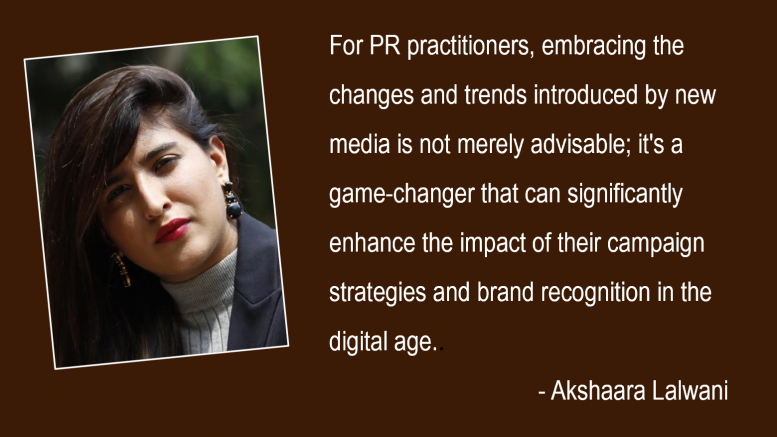The landscape of marketing and communication has undergone a seismic shift, and the world of public relations (PR) has not been left untouched. It’s become increasingly clear that incorporating new media into PR strategies isn’t just a choice; it’s an absolute necessity, particularly in the wake of the pandemic. While adapting to these changes may require some adjustments, there’s no denying that it has significantly enhanced the effectiveness of PR.
In today’s PR world, we’ve moved far beyond the traditional confines of media relations. As we dive deeper into the digital age, PR is changing along with new technology. Gone are the days when newspapers and cable television ruled the roost. While these conventional media outlets still have a role to play, new media is rapidly emerging as the preferred channel of communication.
New media, with its internet-based nature and real-time online presence, stands in stark contrast to traditional media. Often referred to as digital media, it’s accessible to anyone with an internet connection. What’s more, a substantial portion of new media is interactive, fostering personalised interactions between brands and their target audiences. It encompasses digital technologies supported by computers and the internet, introducing interactivity that was conspicuously absent in traditional communication. And within this realm, we find emerging media technologies like websites, social media platforms, over-the-top (OTT) services, music streaming, and virtual/augmented reality.
For PR practitioners, embracing the changes and trends introduced by new media is not merely advisable; it’s a game-changer that can significantly enhance the impact of their campaign strategies and brand recognition in the digital age.
Let’s delve into the transformative impact of new-age media:
Social Media: Social media offers an invaluable real-time engagement tool, facilitating the development of a brand identity and enabling brands to stay attuned to evolving trends. The rise of influencer marketing takes personalisation to new heights, allowing customers to forge intimate and authentic connections with brands. Social media also simplifies crisis management, providing a rapid response platform to address negative feedback and counter unfavourable reviews. Moreover, social media analytics, fuelled by data insights, empower precise audience targeting, campaign optimisation and the evaluation of critical performance metrics.
Digital Channels: The ubiquity of mobile phones has made it effortless for individuals to access the latest news, articles, and information, putting information at their fingertips. Digital publications, with their ability to target specific reader demographics, make it easier to connect with and convey a brand’s message to the intended audience. PR specialists can now reach a broader audience through digital publications, capitalising on media’s longstanding association with news and information.
Podcasts: Podcasts, whether downloaded or streamed live, offer the advantage of offline listening once downloaded. They provide brands with a powerful platform to convey their message and raise awareness within their specialised industries. In a world where more people express interest in business operations and seek insights from top performers, podcasts offer an advanced platform, extending PR professionals’ reach to an audience that radio might not reach.
Blogs/Vlogs: Written blogs and video blogs, or vlogs, enable brands to communicate with their target audience in a more one-sided manner, catering to individual preferences for reading or watching content. In an era when social media often favours shorter content formats, blogs and vlogs offer a more extended mode of communication and content generation. This versatility empowers PR to effectively engage the audience, driving traffic to both the brand’s website and blog.
The influence of new media on PR is undeniable. It’s reshaping the way brands communicate, engage with audiences and navigate the ever-evolving media landscape. Embracing these changes isn’t just a choice; it’s a necessity for PR practitioners looking to supercharge their campaigns and cultivate brand recognition in the digital age. The digital revolution is here, and it’s time to embrace it or risk being left behind.
The views and opinions published here belong to the author and do not necessarily reflect the views and opinions of the publisher.



Be the first to comment on "How New Media is Changing the Dynamics of Media Relations in PR"